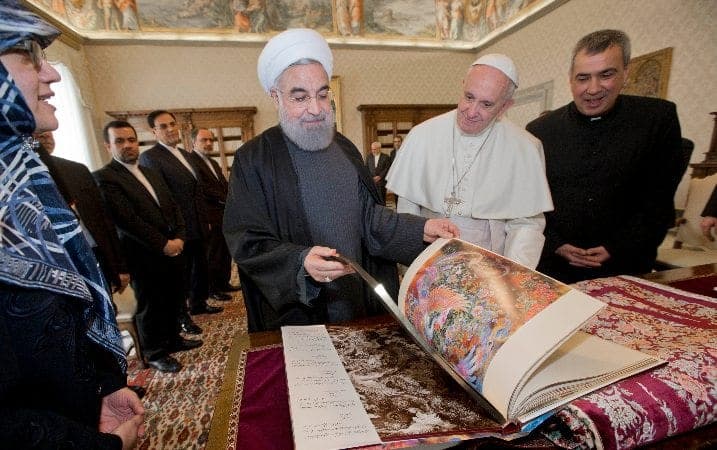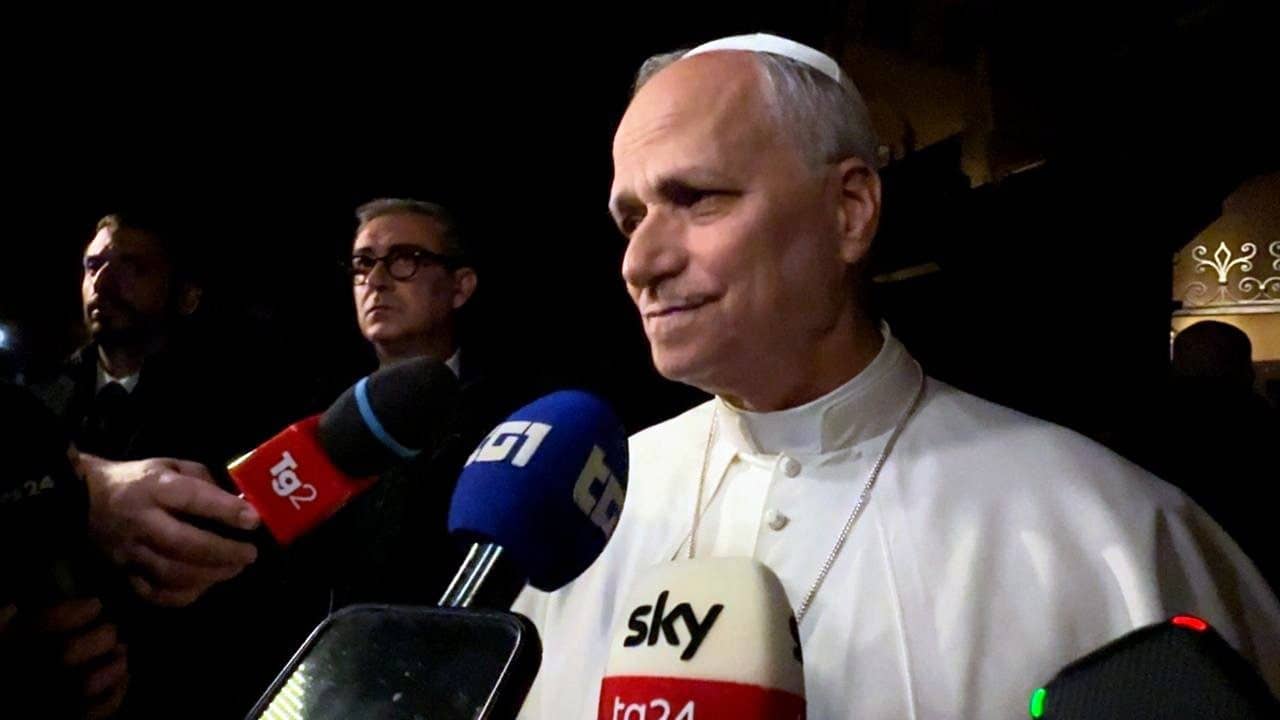ROME — Pope Francis’ meeting with Iranian President Hassan Rouhani at the Vatican Tuesday marked the first time Rouhani has visited the West since a landmark nuclear agreement and the lifting of international sanctions against Iran last year.
Although neither the Vatican nor Rouhani’s delegation would describe the content of the conversation, it was widely expected that the two men focused on the Middle East, including Iran’s role in the conflict in Syria and Iraq and the fate of Christian minorities across the region.
Unconfirmed Italian media reports also suggested that Rouhani may have used the occasion to invite Francis to visit Iran, perhaps as early as May when the pontiff is said to be mulling an outing to Armenia.
Francis greeted Rouhani and his delegation of 12 officials — all men, except for one female interpreter — in the Apostolic Palace for the closed-door meeting, which lasted more than 40 minutes.
As is customary, at the end of the meeting the two exchanged gifts. Francis presented Rouhani with a medal depicting St. Martin of Tours giving his coat to a poor man.
“It’s a sign of brotherhood,” Francis told him.
He also gave Rouhani a copy of his encyclical Laudato Si’. Since it hasn’t been translated in Farsi, the language used in Iran, the pope told him he was giving him a copy in English and another in Arabic.
The president gave Francis a red-toned prayer rug measuring 32 inches by 4 feet, explaining that the rug was handmade in the Iranian holy city of Qom, which is the largest center for Shia scholarship in the world, and is a significant destination of pilgrimage. Rouhani also gave the pontiff a large book containing illustrations of Iranian artworks.
The pope thanked Rouhani for the visit, telling him, “I hope for peace.” Rouhani asked Francis to pray for him.
Rouhani’s visit was one of his first stops on a five-day trip to Europe that began Monday. In Italy, he met Prime Minister Mateo Renzi and President Silvio Mattarella; he now travels to France to meet President François Hollande at the Elysée palace on Thursday.
The visit was initially scheduled for last November, but it was canceled at the last minute after the Paris terrorist attacks.
Rouhani, a self-declared moderate, was elected in 2013 on a platform to reduce Iran’s isolation. He led Iran in accepting the Joint Comprehensive Plan of Action on his country’s nuclear program, known as the “Iran deal,” signed by the United States, China, France, Russia, United Kingdom, Germany, and the European Union.
Earlier in the year, Francis cited the deal, along with the Paris’ climate change agreement, as one of the key achievements of 2015 “which give solid hope for the future.”
“I think first of the so-called Iran nuclear deal, which I hope will contribute to creating a climate of détente in the region,” the pope told diplomats accredited to the Holy See.
Before the international agreement on Iran’s nuclear program was reached last July, Francis supported the deal, describing it as “a definitive step toward a more secure and fraternal world.”
This is the first meeting between the pope and the Iranian president since Mohammad Khatami visited John Paul II in March, 1999.
After that meeting, which drew strong criticism from those opposed to the Iranian regime, Khatami told journalists that “The hope is for the final victory of monotheism, morality, peace, and reconciliation.”
Khatami traveled to the Vatican to attend the funeral of the Polish pope in 2005, but didn’t participate in the installation Mass for Benedict.
His successor, Mahmoud Ahmadinejad, never met with the German pope, although not for lack of trying. In 2008, when he traveled to Rome for a United Nations summit, the Iranian leader requested a private audience with the pontiff. It was reported at the time that the Vatican refused the requests of seven world leaders in order to avoid a meeting with Iran.
Two years later, Ahmadinejad sent a letter to Benedict, saying he would like to work more closely with the Vatican in an effort to stop religious intolerance and the breakup of families.
Benedict responded by denouncing the growing anti-Catholic discrimination in the Middle East.
“In some countries these communities face difficult circumstances, discrimination and even violence and they lack the freedom to live and publicly profess their faith,” he wrote.
In the days leading up to Tuesday’s visit, Iranian media reported that Rouhani would take the opportunity to invite Francis to visit Iran. When asked about it, a Vatican spokesman said that the pontiff would likely accept.
If a papal visit does happen, it wouldn’t be the first: Pope Paul VI was welcomed by President Mohammad Reza Shah Pahlavi in 1970 during a brief stopover en route to the Far East.
The last time Francis welcomed an official delegation from Iran was last February when he received Shahindokht Molaverdi, the vice president for women and family affairs. At a press conference in Rome after the meeting, Molaverdi said Francis “has an ability to bring people together, which can also influence governments.”
















